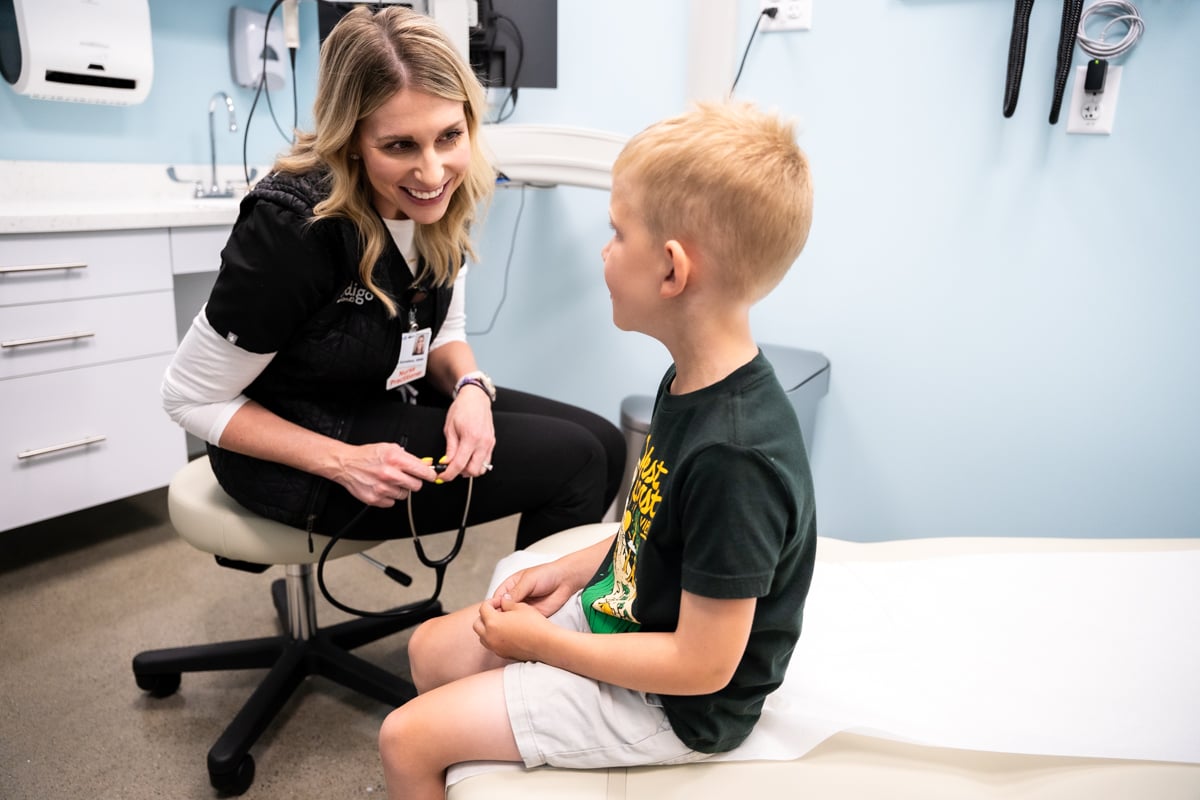Back-to-school season means new gear, new routines – and, like it or not, a refresher course on the creepy, crawly subject of head lice.
Whether you’re a parent, student, teacher, or someone just caught in the crosshairs of an unexpected infestation, knowing the real facts about lice – minus the shame, panic or myths – can help you handle an outbreak calmly and confidently.
What are lice?
Lice are tiny insects – about the size of a sesame seed – that feed on human blood. These parasites live in the hair, bite the scalp, and attach their eggs (called nits) to the base of hair shafts. They can occasionally show up on eyebrows and eyelashes.
The bugs themselves are gray or tan and have three pairs of claw-like legs. Their eggs can be white, yellowish, tan, or brown and are usually found close to the scalp. They may look like dandruff, but don’t come off easily if you pull on them.
How do you get head lice?
Lice spreads mostly through direct head-to-head contact with someone who already has them. That’s why they’re so common in kids ages 3-12 who spend lots of time in close contact at school, daycare, or during playdates.
Less commonly, lice can hitch a ride on shared personal items, such as combs, hairbrushes, hats, sports helmets, hair accessories, headphones, or bedding.
While kids are especially susceptible, anyone can get lice – regardless of age, hair type, or hygiene habits.
Why do lice spread so easily?
We can sum it up in one word: speed.
Lice can’t fly, but they can crawl quickly – up to 9 inches per minute – and can move from one head to another in seconds. Once they find a new scalp, they reproduce rapidly. A female louse can lay up to 10 eggs per day. Those eggs hatch in 6-10 days and mature into adults in just 5-8 days. That’s why infestations grow so quickly if left untreated.
How can you tell if you have head lice?
The most common sign of head lice is itching, though it may not appear right away, especially if you have lice for the first time.
Other clues might include:
- A tickling sensation or the feeling that something is moving in your hair.
- Small bumps or sores from scratching.
- Nits or empty shells, often near the hairline, neck, or ears.
- Trouble sleeping, since lice are most active at night.
To check for lice, use a fine-toothed comb or special lice comb on wet hair and slowly comb through small sections.
How do you get rid of head lice?
Your first line of defense is to treat the scalp. Several over-the-counter shampoos, lotions, and creams are designed to kill head lice, such as Nix, Rid, and Sklice (and their generic versions). Always follow directions carefully.
Here are some general guidelines for OTC treatment:
- Apply to dry or damp hair as instructed, ensuring the scalp and hair are completely covered from root to tip.
- Leave the product on for the recommended time, then rinse or wash out as directed.
- Comb wet hair with a fine-tooth lice comb to remove lice and nits. Work in small sections, cleaning the comb after each pass. Nits are stubborn and may require several comb-throughs to remove completely.
- Repeat treatment in 7-10 days if needed. Most OTC treatments recommend a second application to catch any newly hatched lice.
Just like antibiotic-resistant “superbugs,” some lice are becoming resistant to OTC remedies. If lice don’t go away after treatment, talk with a health care provider about stronger prescription options.
Many parents also try natural methods, such as mayonnaise, neem oil, vinegar, saline sprays, or coconut oil. While these approaches are popular, most lack scientific evidence and can be messy and time-consuming. Over-the-counter or prescription options remain the most reliable way to eliminate lice.
How can I stop lice from spreading in my home?
After scalp treatment, you’ll want to take some additional steps to prevent reinfestation:
- Wash clothing and bedding in hot water and dry on high heat. Items that can’t be washed should be dry cleaned or stored in a sealed plastic bag for two weeks.
- Wash combs and brushes in very hot water after each use, or coat them in lice-killing shampoo, cream, or lotion, and leave on for 15 minutes and rinse.
- Vacuum furniture and other areas of your home that could have come in contact with lice.
How long does head lice last?
Without treatment, lice can survive on the scalp for up to 30 days. With effective treatment, infestations typically clear within 1-2 weeks, although nit removal and monitoring may take longer.
What should I do if there’s a lice breakout at my child’s school?
If there’s a lice outbreak at your child’s school, try not to panic. It’s more common than you think – and it has nothing to do with hygiene.
In the past, schools often enforced strict “no-nit” policies, sending kids home until every egg was gone. Today, health experts advise against this. To reduce stress, embarrassment, and missed school days, the American Academy of Pediatrics, National Association of School Nurses and Centers for Disease Control and Prevention (CDC) all recommend that children stay in class and return once they start treatment at home.
Many schools now follow these updated guidelines, but policies can vary. Check with your child’s school or district to confirm what’s in place.
What’s the best way to prevent lice?
While you can’t always prevent lice, you can take steps to keep lice from moving in:
- Remind kiddos to avoid head-to-head contact during play.
- Teach kids not to share personal items like hats, combs, hair accessories or headphones.
- Do routine scalp checks during the school year so you can catch infestations early.
Should I get medical treatment for head lice?
Most lice infestations can be treated at home with over-the-counter medications. In some cases, treatment may be necessary if:
- OTC treatments don’t work
- You notice signs of infection from scratching, such as fever, oozing sores, pain, redness or swelling.
Indigo is here when lice strike
When lice appear, waiting days for care only adds stress. At Indigo Urgent Care, we offer fast, friendly care for life’s not-so-pleasant surprises.
Walk into one of our neighborhood locations or book a same-day or next-day appointment online. For even greater convenience, try Indigo Virtual Care and connect face-to-face with a clinician from the comfort of home.
In-person or virtually, you’ll get a quick scalp evaluation, guidance on the most effective treatment options and prescriptions sent directly to your pharmacy, if needed.
Open 8 am to 8 pm every day, Indigo makes it simple to get reliable care when and where you need it.


